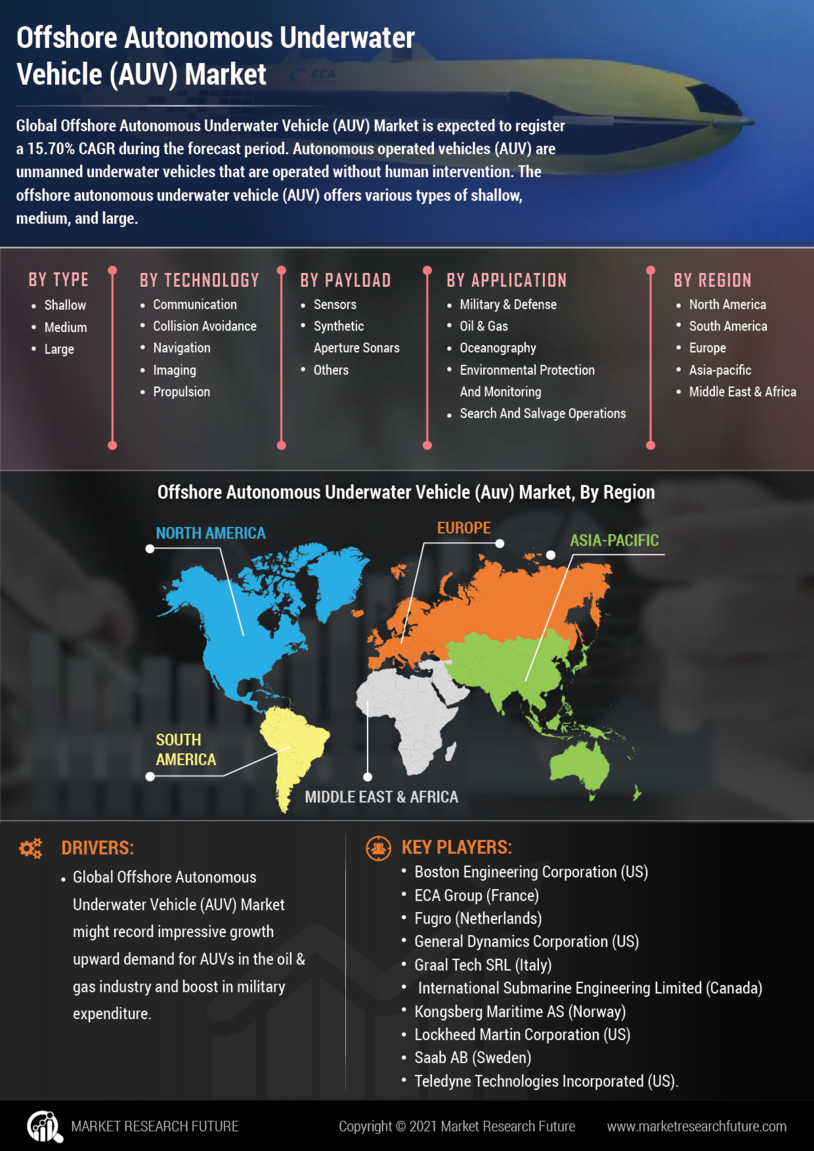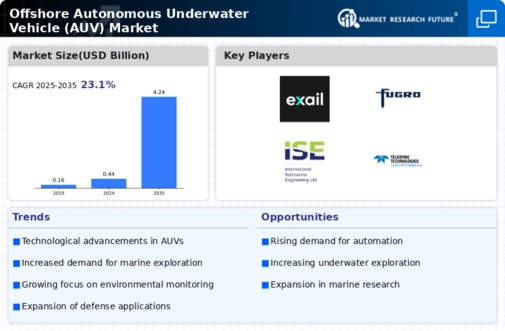Market Growth Projections
The Global Offshore Autonomous Underwater Vehicle Market AUV Market Industry is poised for substantial growth, with projections indicating a market value of 0.44 USD Billion in 2024, escalating to 4.24 USD Billion by 2035. This trajectory suggests a remarkable compound annual growth rate of 22.9% from 2025 to 2035. Such growth is indicative of the increasing reliance on AUVs across various sectors, including marine research, defense, and environmental monitoring. The expanding applications of AUVs, coupled with technological advancements and rising investments, contribute to this optimistic outlook. Stakeholders are likely to focus on innovation and strategic partnerships to capitalize on emerging opportunities in the market.
Technological Advancements in AUVs
Technological advancements play a pivotal role in shaping the Global Offshore Autonomous Underwater Vehicle Market AUV Market Industry. Innovations in sensors, navigation systems, and battery technologies enhance the operational capabilities of AUVs, allowing for longer missions and more precise data collection. These advancements not only improve the efficiency of underwater operations but also reduce operational costs, making AUVs more attractive to various sectors. As organizations seek to leverage cutting-edge technology for marine applications, the market is likely to witness significant growth. The integration of artificial intelligence and machine learning into AUV systems further indicates a trend towards smarter, more autonomous vehicles.
Rising Demand for Marine Exploration
The Global Offshore Autonomous Underwater Vehicle Market AUV Market Industry experiences a surge in demand driven by the increasing need for marine exploration. As industries such as oil and gas, environmental monitoring, and marine research expand, the utilization of AUVs becomes essential for efficient data collection and analysis. In 2024, the market is valued at 0.44 USD Billion, reflecting the growing reliance on these technologies. The ability of AUVs to operate in challenging underwater environments enhances their appeal, suggesting a robust growth trajectory. By 2035, the market is projected to reach 4.24 USD Billion, indicating a compound annual growth rate of 22.9% from 2025 to 2035.
Increased Investment in Marine Research
The Global Offshore Autonomous Underwater Vehicle Market AUV Market Industry benefits from increased investment in marine research initiatives. Governments and private entities are recognizing the importance of understanding marine ecosystems and resources, leading to enhanced funding for research projects. This investment is crucial for the development and deployment of AUVs, which are instrumental in gathering data on oceanographic conditions, biodiversity, and climate change impacts. The growing emphasis on sustainable practices and environmental conservation further propels the demand for AUVs in research settings. As funding continues to rise, the market is expected to expand, reflecting the critical role of AUVs in advancing marine science.
Growing Applications in Defense and Security
The Global Offshore Autonomous Underwater Vehicle Market AUV Market Industry is significantly influenced by the growing applications of AUVs in defense and security. Military organizations are increasingly adopting AUVs for surveillance, reconnaissance, and mine detection operations. The ability of AUVs to operate stealthily and gather intelligence in hostile environments enhances their value in national security strategies. As geopolitical tensions rise, the demand for advanced underwater capabilities is likely to increase, driving market growth. Furthermore, collaborations between defense contractors and technology firms are expected to yield innovative AUV solutions, further solidifying their role in modern defense operations.
Environmental Regulations and Sustainability Initiatives
The Global Offshore Autonomous Underwater Vehicle Market AUV Market Industry is shaped by stringent environmental regulations and sustainability initiatives. As governments worldwide implement policies aimed at protecting marine environments, the demand for AUVs that can conduct environmentally friendly assessments and monitoring rises. AUVs equipped with advanced sensors can provide critical data for compliance with regulations, facilitating sustainable practices in industries such as fishing, shipping, and oil exploration. This alignment with environmental goals not only enhances the market appeal of AUVs but also encourages investment in their development. The focus on sustainability is likely to drive innovation and adoption in the coming years.















Leave a Comment